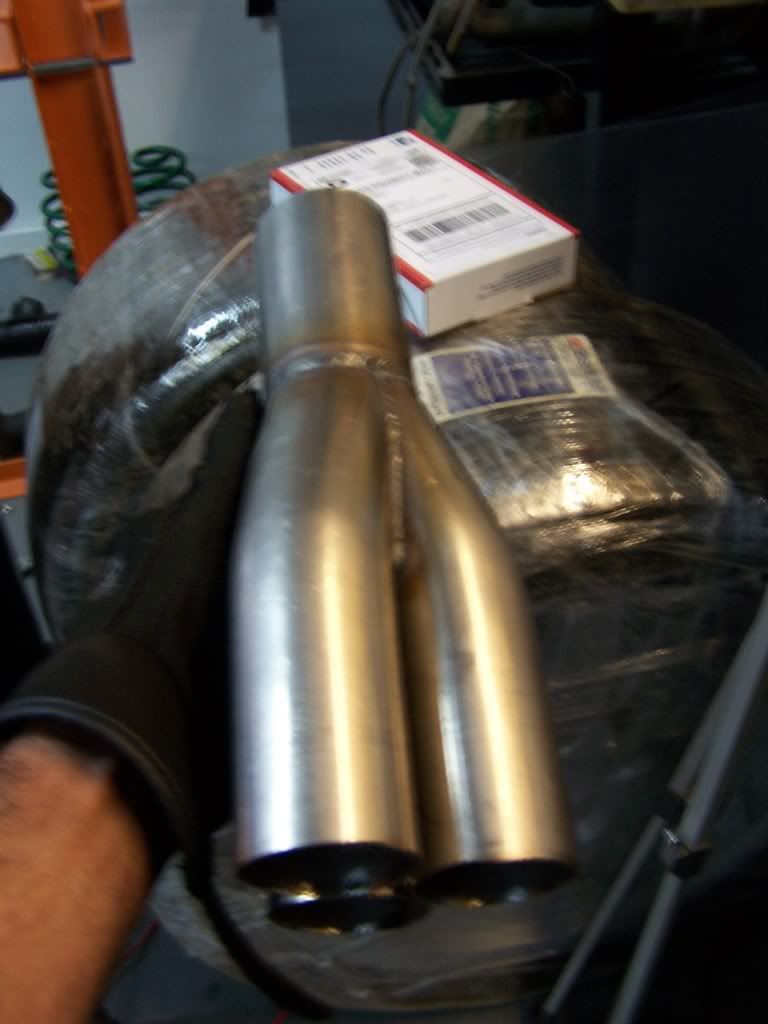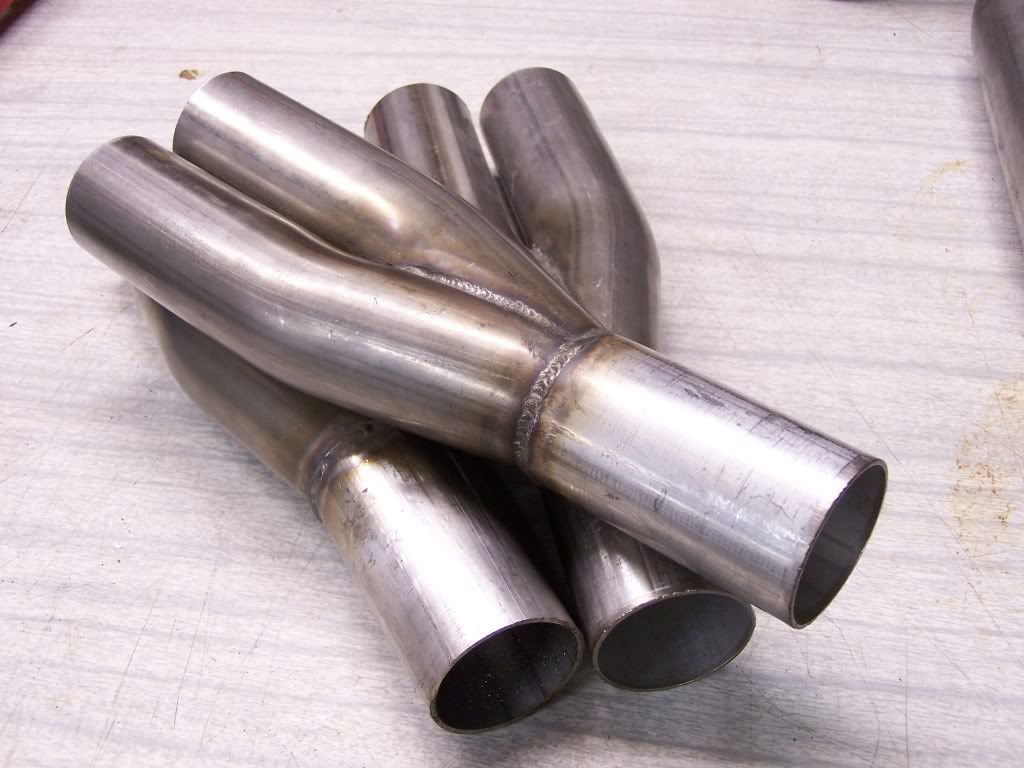Originally posted by slw240sx
View Post
I am taking your advise and removing the taper. I thought it was for velocity but didn't realize the difference in turbo apps. Speaking of the collector, I still yet have to find the idea diameter for the primaries. Also need to figure the cross-sectional ratio from 3 smaller pipes to one larger pipe. Should I maintain equal cross section area?
Example,
Using 16 gauge as the example (roughly 0.0625" or 1/16" thick)
Primaries, 1.75" OD / 1.7375" ID
Surface Area of Circle = 2.37"²
Three Primaries Total = 7.11"²
Secondary Pipe Diameter = 3" (which is A= 7.11"²)
But if I go 1.5" Primaries then the secondary should be (1.767"² * 3 = 5.3"²) diameter of 2.6" ID , 2.725" OD.
But it seems excessive to have two 3" pipes merging into the Turbo. But that is how the math states it.
Any advise there?
EDIT UPDATE: I think I am missing pressure as a factor and that all 3 exhaust primaries aren't flowing at once. So I think I should approach the equation with mass instead of volume. And then knowing the average ambient pressure in the header primary while valve closed and when there is flow. So then the secondary pipe should flow (2x ambient PSI + 1x boosted exhaust PSI ) = secondary diameter to maintain steady velocity for a given PSI during 1 primary flowing. Ugh, thats gonna be a cruncher. I need to read up on my physics books I have lying around.
Originally posted by pocket-rocket
View Post
I know it seems like a silly question but if the scavenging effect is created at the collector, then in theory exhaust under pressure would still create a lesser pressure reversion wave which would aid the excavation of exhaust gases under greater pressures and heat. Same mechanics just at a higher pressure with greater heat. But what of the turbines effect on all of that?





 What I gained the most was to forget about making any real sense of it without testing. The varying lift of the exhaust and the cam timing will be a part of this (and imagine variable cam timing, woohoo!).
What I gained the most was to forget about making any real sense of it without testing. The varying lift of the exhaust and the cam timing will be a part of this (and imagine variable cam timing, woohoo!).
Leave a comment: